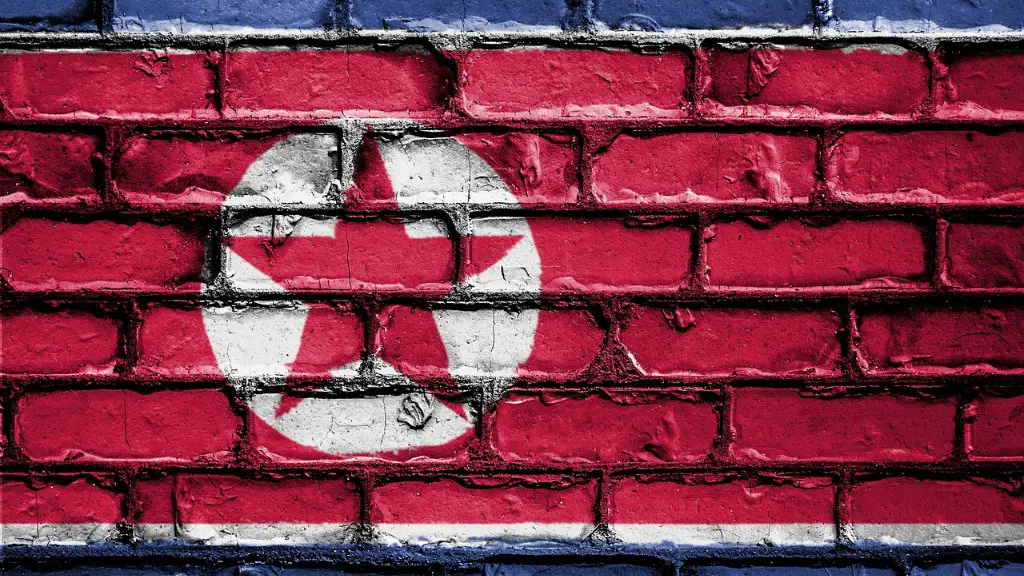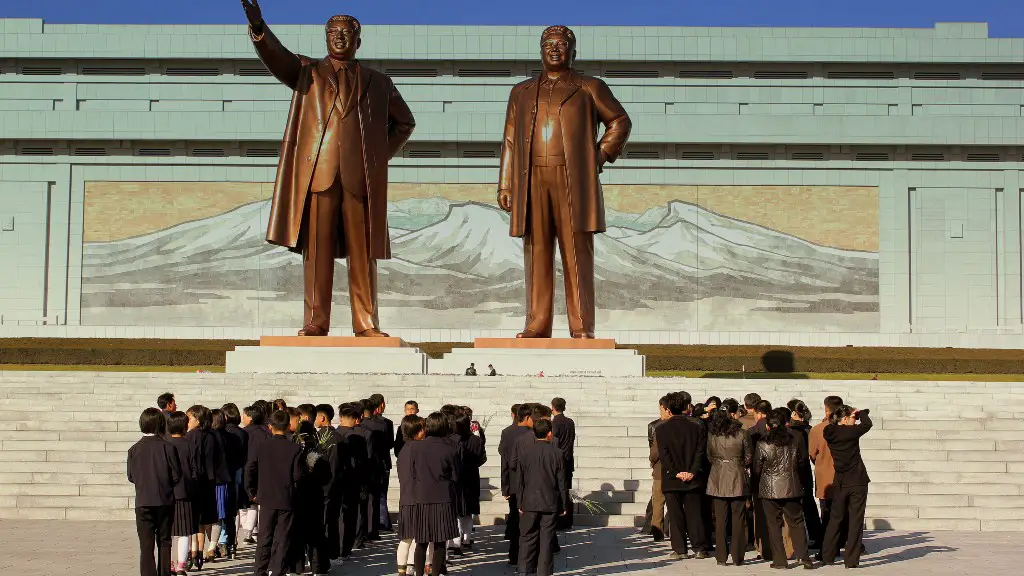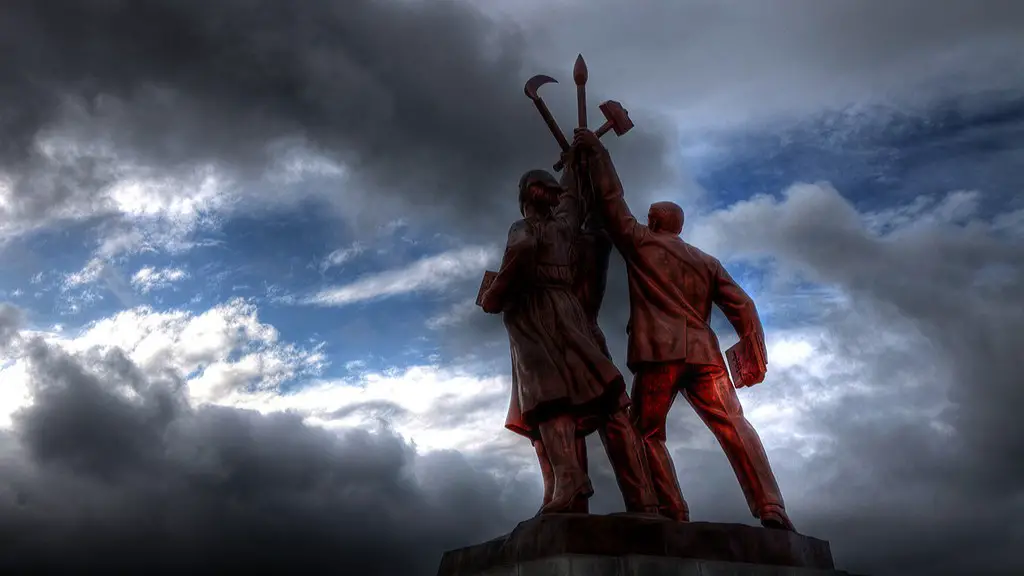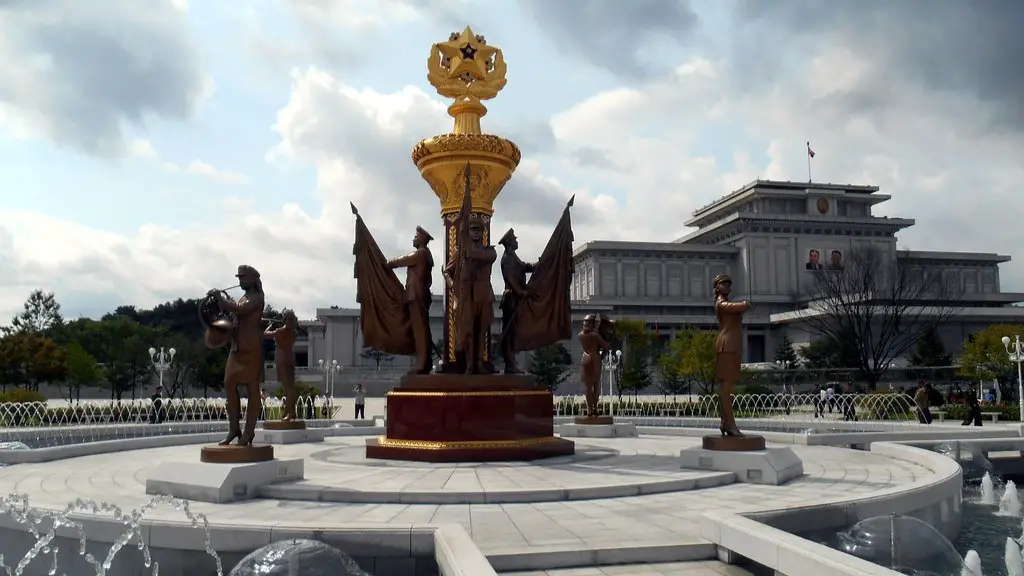The origins of North Korea’s nuclear program date back to the 1950s, when the Soviet Union began assisting the country in developing its own atomic capabilities. By the late 1980s, Pyongyang was believed to have assembled a small nuclear arsenal. In 1992, North Korea and the International Atomic Energy Agency reached an agreement under which the country would allow international inspections of its nuclear facilities in exchange for technical assistance in developing its civilian nuclear program. However, North Korea began to back away from the agreement in the mid-1990s, culminating in its withdrawal from the Nuclear Nonproliferation Treaty in 2003.
Over the years, various theories have been put forward to explain why North Korea sought to develop nuclear weapons. Some believe that the country’s leader, Kim Jong-un, is using nuclear weapons as a way to consolidate power and maintain control over the North Korean people. Others believe that Pyongyang is motivated by a desire to protect itself from the threat of a U.S. invasion, or to gain leverage in negotiations with Washington. Whatever the reason, it is clear that North Korea’s nuclear program represents a grave threat to regional and global security.
There are a number of reasons why North Korea may have wanted to develop nuclear weapons. Firstly, nuclear weapons act as a deterrent against attack from other countries – if North Korea has nuclear weapons, then other countries are less likely to attack it for fear of retaliation. Secondly, nuclear weapons could give North Korea a sense of power and prestige on the international stage – as one of the few countries with nuclear weapons, North Korea would be seen as a significant player in the world. Finally, nuclear weapons could be used as a bargaining chip in negotiations with other countries – for example, North Korea could threaten to use its nuclear weapons unless other countries agree to its demands.
How did North Korea develop nukes?
North Korea has been working to develop its nuclear capabilities for some time now, and it appears that they have made significant progress. They have extracted plutonium from their nuclear reactor and have also developed centrifuges to produce enriched uranium, which can be used to fuel an atomic bomb. While it is not clear what their intentions are, it is possible that they are working towards developing a nuclear weapon. This would be a major concern for the international community, as North Korea is a volatile country with a history of aggression. It is important to keep a close eye on their nuclear program and to try to prevent them from developing a weapon.
The Cuban Missile Crisis was a major turning point for North Korea’s nuclear program. Following the withdrawal of Soviet missiles from Cuba, the North Korean regime became increasingly worried that Pyongyang might be abandoned by its superpower protectors. Nuclear weapons were seen as a way of guaranteeing North Korean security, and the program was accelerated in the years that followed. Today, North Korea is one of the world’s leading nuclear powers, and its nuclear arsenal is seen as a critical part of the regime’s survival strategy.
Who gave North Korea nuclear weapons
According to US intelligence officials, Prime Minister Benazir Bhutto of Pakistan allegedly supplied key data, stored on CDs, on uranium enrichment and information to North Korea in exchange for missile technology around 1990–1996. This data is said to have helped North Korea develop its nuclear weapons program. If true, this would be a serious breach of international law and a major proliferation concern.
North Korea’s investment in long-range ballistic missiles and miniaturization of its nuclear weapons stockpile is a clear attempt to deter external threats to the Kim family regime. The country’s leadership clearly views these capabilities as essential to its survival, and is willing to invest significant resources in their development and upkeep. While North Korea’s nuclear arsenal is not yet large enough to pose a serious threat to the US or its allies, it is clear that the country is committed to continued development in this area. As such, it is important to monitor North Korea’s progress in this area and take steps to ensure that its nuclear capabilities are not allowed to grow to a point where they could pose a serious threat to regional or global security.
Can North Korea hit the US with a nuclear missile?
The Hwasong-14 ballistic missile is a North Korean missile that can travel up to 4,500km. It has been tested with a range of 8,000km, but some studies suggest it could travel as far as 10,000km. This makes it capable of reaching New York.
The Sino-Soviet Friendship Treaty, also known as the Treaty of Friendship, Alliance and Mutual Assistance, was a treaty of mutual assistance between the People’s Republic of China and the Soviet Union. The treaty was signed on February 14, 1950 in Moscow, and was in force until the Sino-Soviet split in 1960.
Under the treaty, the Soviet Union agreed to provide military and economic assistance to China, and China agreed to provide the Soviet Union with raw materials. In particular, China agreed to provide uranium ore to the Soviet Union in exchange for Soviet assistance in nuclear technology.
The treaty was a key factor in the development of China’s nuclear weapons program. With Soviet assistance, China began developing nuclear weapons in the late 1950s. By the time the Sino-Soviet split occurred in 1960, China had made significant progress in its nuclear weapons program.
Does the US keep nukes in South Korea?
The United States withdrew its South Korea-based arsenal of approximately 100 nuclear weapons in 1991 to move past the Cold War. No US nuclear weapons have been stationed in the country since. This was a significant move towards peace and de-escalation in the region, and helped to create a more stable and secure environment.
The United States had previously stationed tactical nuclear weapons, or non-strategic nuclear weapons, in South Korea between 1958 and 1991 to counter a potential renewed invasion by North Korea. At its height, the US nuclear arsenal in South Korea comprised eight weapons systems consisting of 950 nuclear warheads. These nuclear weapons were withdrawn in 1991 as part of the US-Soviet nuclear arms reduction negotiations.
What country has the most nukes
Russia has the most confirmed nuclear weapons, with 5,997 nuclear warheads. The United States follows behind with 5,428 nuclear weapons, hosted in the US and 5 other nations: Turkey, Italy, Belgium, Germany and the Netherlands. Russia’s nuclear arsenal is the largest in the world, and its nuclear capabilities are a matter of national pride. The US nuclear arsenal is also significant, and its nuclear weapons are spread out among a number of key allies.
Japan does not currently have any programs underway for the development of weapons of mass destruction (WMD), although it is the only non-nuclear weapon state in possession of a full nuclear fuel cycle and has advanced WMD-relevant industries. These facts have led some to speculate that Japan could potentially develop a WMD program in the future if the security environment in East Asia deteriorates.
How did Russia get nuclear weapons?
The Soviet atomic bomb project was a highly secretive and highly complex undertaking, involving many thousands of scientists, engineers, and support staff. The project was authorized by Joseph Stalin in the Soviet Union in response to the development of nuclear weapons by the United States and the United Kingdom during World War II. The project eventually succeeded in developing a working atomic bomb, which was detonated in 1949. The Soviet atomic bomb project was one of the most ambitious scientific undertakings of the 20th century, and its success helped to pave the way for the development of the nuclear arsenal of the Soviet Union.
The Japanese government has considered developing nuclear weapons in the past, but decided that this would make Japan less secure. Japanese opinion polls consistently express strong public opposition to nuclear weapons, and so do their elected representatives.
Who is helping North Korea build missiles
China has been a key supplier of missile-related items, raw materials, and other assistance to North Korea. It is believed that Chinese technology has been incorporated into North Korea’s Scud, Nodong, and Taepodong missiles, and it is suspected that China has also contributed nuclear expertise. This assistance has helped North Korea develop a significant missile capability, which is a major concern for the United States and its allies in the region.
If a nuclear attack were to occur on US soil, the most likely targets would be New York, Chicago, Houston, Los Angeles, San Francisco, or Washington, DC. These cities are the most populous and economically important cities in the country, and thus would be the most impactful targets. While there is no guarantee that these would be the only targets, they would be the most likely.
Why is North Korea testing weapons again?
North Korea’s weapons tests serve multiple purposes beyond simply deterring their enemies. They also use these tests as a way to measure technical progress, as well as to create propaganda value and demonstrating that their crews are ready and capable. Ultimately, these tests show that North Korea is a force to be reckoned with and that their deterrence goes both ways.
There is no doubt that the United States Air Force is the most powerful in the world. With a fleet of over 5,200 active aircraft, the USAF is by far the largest and most technologically advanced air force in the world. The USAF also has the most powerful air force in terms of combat capability. In terms of size, the USAF is approximately three times the size of the next largest air force (the Russian Air Force). In terms of technology, the USAF is also far ahead of any other air force in the world. The USAF has the most advanced aircraft and weapon systems in the world, and its pilots are some of the most skilled and experienced in the world. In terms of combat capability, the USAF is truly unmatched.
Warp Up
The exact answer to this question is not known, but there are several theories. One theory is that North Korea developed nuclear weapons as a deterrent against a possible invasion by the United States or other powers. Another theory is that North Korea developed nuclear weapons to increase its bargaining power in negotiations with the United States and other countries.
There are a number of reasons why North Korea might have decided to develop nuclear weapons. One possibility is that they saw it as a way to deter any potential attack from the United States or other countries in the region. Another possibility is that they wanted to use nuclear weapons as a bargaining chip in order to get economic concessions from the international community. Whatever the reasons, it is clear that North Korea’s development of nuclear weapons is a cause for concern.





